One step forward and another step back: the global economy advances in the de-escalation phase, but COVID-19 casts a long shadow
The major economies have seen improvements in their macroeconomic data in May and June as the lockdown measures have been largely relaxed, following the unprecedented collapse of April. However, the economy started from such a low point in May that this progress will only serve to slightly mitigate the GDP declines in Q2 that are expected to be both historic and widespread (with the exception of China). In particular, the economic activity indicators suggest declines in GDP for Q2 in the euro area and the US of around 20% and 10%, respectively. The recovery will be gradual but incomplete in the remainder of the year, as the severity of the social distancing measures – which are unlikely to disappear altogether – will need to be repeatedly adjusted depending on the outbreaks of SARS-CoV-2 that occur. The recent re-implementation of some rather restrictive lockdown measures in the metropolitan area of Lisbon or in Texas in response to new outbreaks serves as an illustrative example of this new reality. Indeed, generally speaking it will not be possible to lift the measures entirely until an effective vaccine or treatment is discovered. Therefore, even if the economic response to counter the pandemic is strong enough (as is the case on the part of the ECB and the Fed), the uncertainty surrounding the virus will continue to restrict the economy’s productive capacity. This diagnosis is shared by the IMF, which has downgraded its forecast for the global economy in its June Update. The Fund now predicts a 4.9% drop in global GDP in 2020 (compared to –3.0% in its spring forecasts) and a more gradual recovery in 2021 (+5.4% versus the previous +5.8%). These forecasts are similar to those of CaixaBank, which, after a substantial downward revision in the European economies, now forecasts a 4.2% drop in global GDP followed by a 6.1% rebound in 2021.
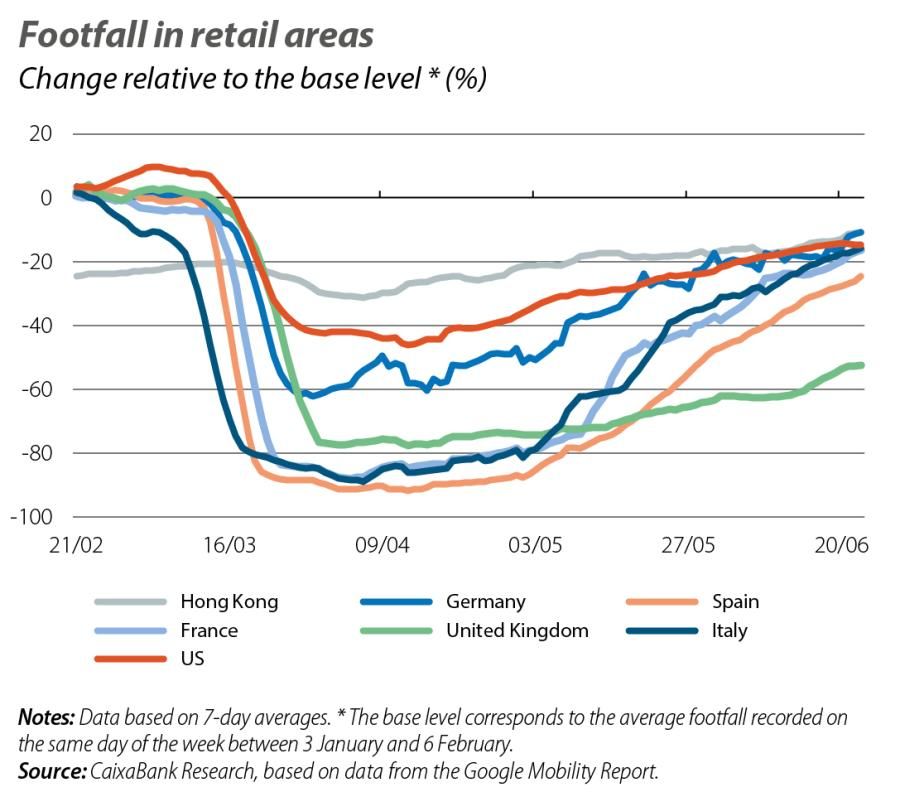
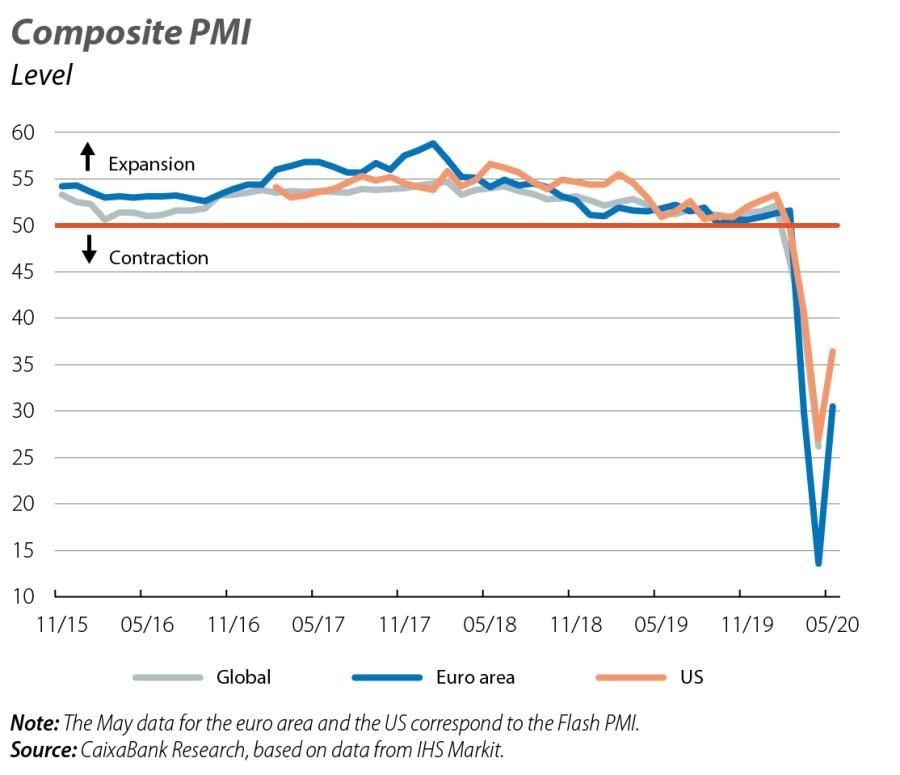
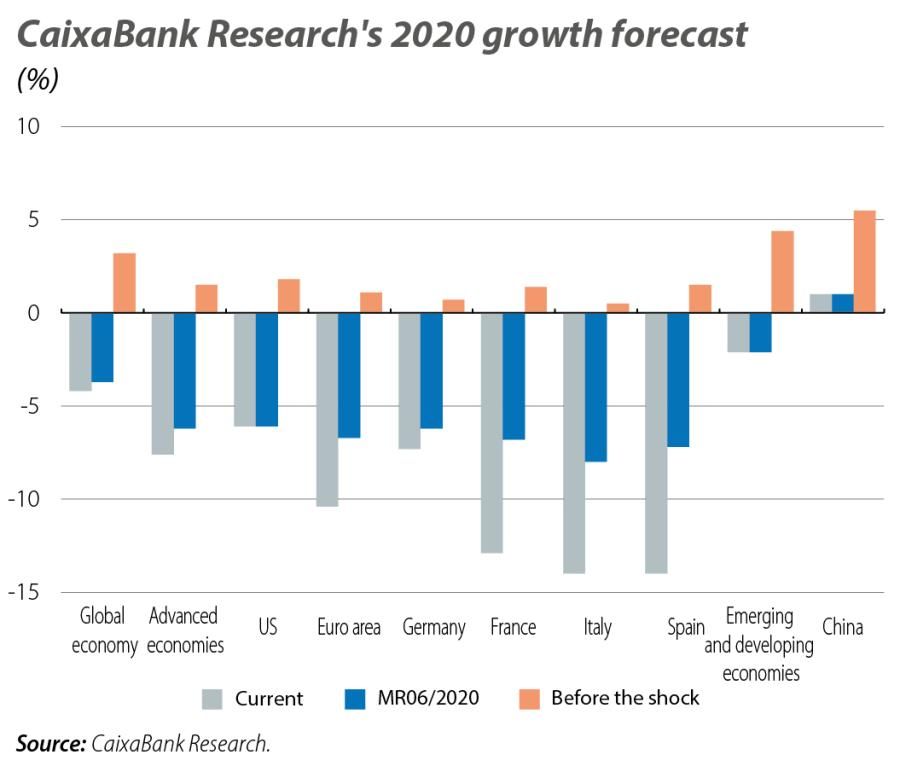
The negotiations to approve this plan presented by the European Commission at the end of May have already begun. Let us remember that the European Commission proposed a recovery plan which would include a fund of some 750 billion euros (5.4% of EU GDP), of which 500 billion euros would be disbursed in the form of transfers, while 250 billion euros would come in the form of loans. The negotiations will be arduous, and the multi-step process, long and winding: once there is a political agreement between Member States, it will have to be approved by the European Parliament and, finally, by the state parliaments. The plan is relatively large in macroeconomic terms and represents a very encouraging first step towards a truly federal Europe, especially if new taxes (green, digital, etc.) are adopted at the European level. Given the substantial support for the plan (it is strongly inspired by a Franco-German proposal), we can expect a version that is reasonably similar to this initial proposal to be approved. That said, the two major sticking points will be determining the final amount of transfers versus loans (it could be modified) and the extent to which conditions are attached to the receipt of the funds.
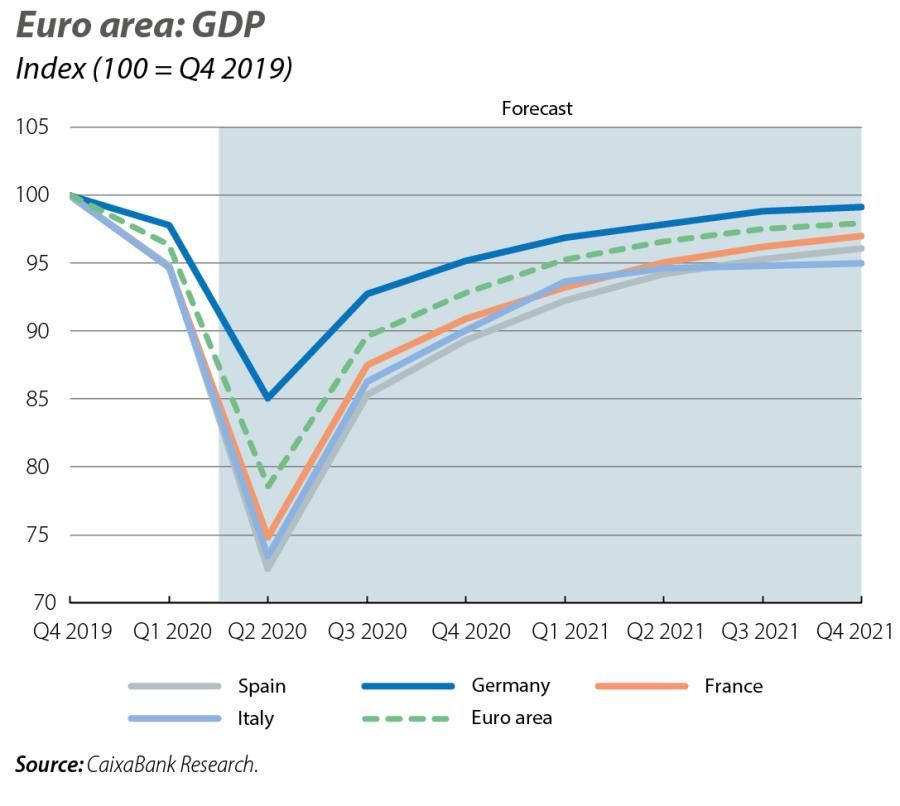
ADVANCED ECONOMIES
The economic activity indicators for the euro area in Q2 suggest a quarter-on-quarter drop in GDP of around 20%. This, together with the prospects of a gradual but incomplete recovery of the economy in the second half of the year, has led us to revise our growth forecast for the euro area in 2020 substantially downward (by 3.7 pps) to –10.4%. This revision is widespread across all countries: down to –7.3% in Germany (previously –6.2%), –12.9% in France (previously –6.8%) and to –14.0% in Italy (previously –8.0%). Thus, the economies with less fiscal space and where the pandemic has been more intense, such as Spain and Italy, will be significantly harder hit than economies such as Germany (following its latest fiscal package, which includes measures such as a temporary cut in VAT and a limit on social security contributions, the combined total of all the direct aids announced now represents slightly more than 13% of GDP). Looking ahead to 2021, the rebound will be significant but gradual, and the euro area is unlikely to recover to pre-crisis levels before 2023. In spite of this sombre picture, it is worth highlighting that as the lockdown has been gradually lifted, economic activity has recovered some of its strength. We need look no further than the euro area’s composite PMI, which rose to 47.5 points in June following a partial recovery in May (31.9). Moreover, consumer confidence in the euro area also improved in June for the second consecutive month, increasing from –18.8 in May to –14.7 in June – a possible indication of a recovery in consumption in the second half of the quarter.
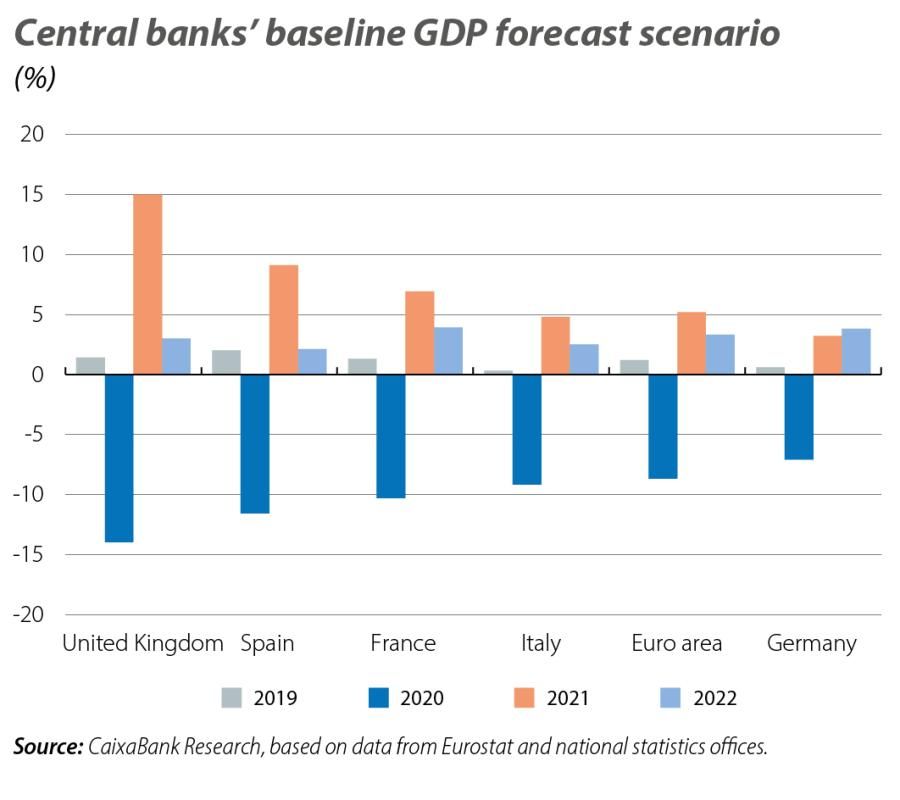
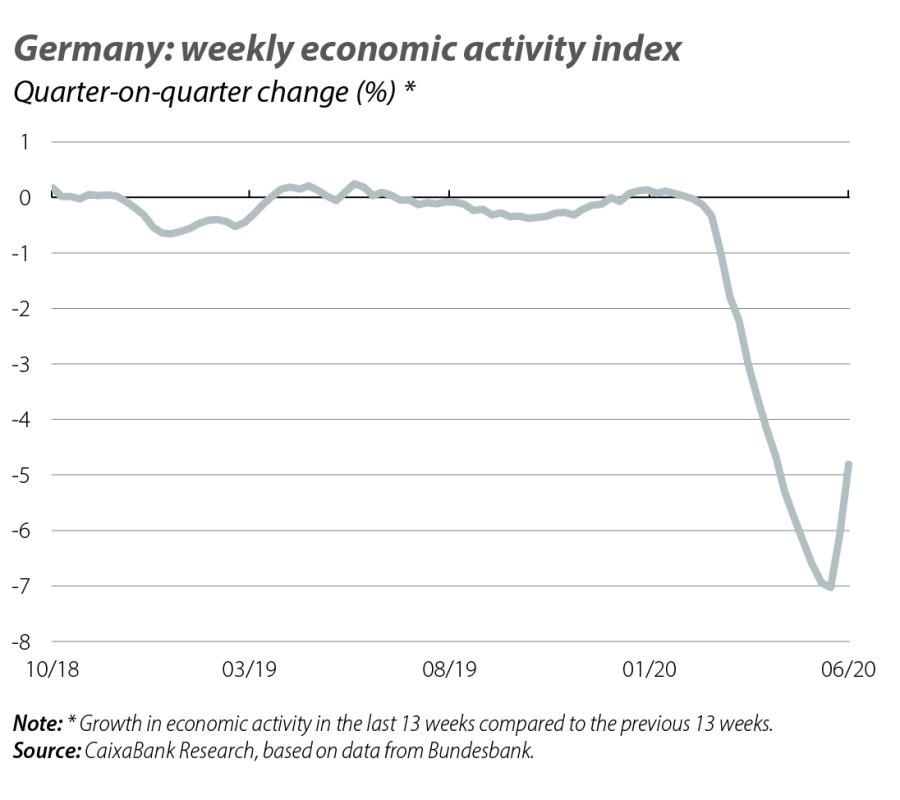
Improvement in the US labour market, although SARS-CoV-2 offers no respite. On the one hand, the US composite PMI stood at 46.8 points in June, an improvement compared to May (37.0) but still below the 50-point threshold that separates recession from expansion. On the other hand, the labour market indicators were positive in June, with the creation of 4.8 million jobs, an improvement on the already hopeful figure for May (+2.5 million jobs). However, it should be recalled that 1.4 million and 20.7 million jobs were destroyed in March and April, respectively. With these figures, the unemployment rate fell to 11.1% (–3.6 pps compared to April). Nevertheless, these green shoots could be cut short if the rise in the number of people infected with COVID-19 in June, which was particularly acute in the country’s Southern and Western states, forces a tightening of lockdown measures.
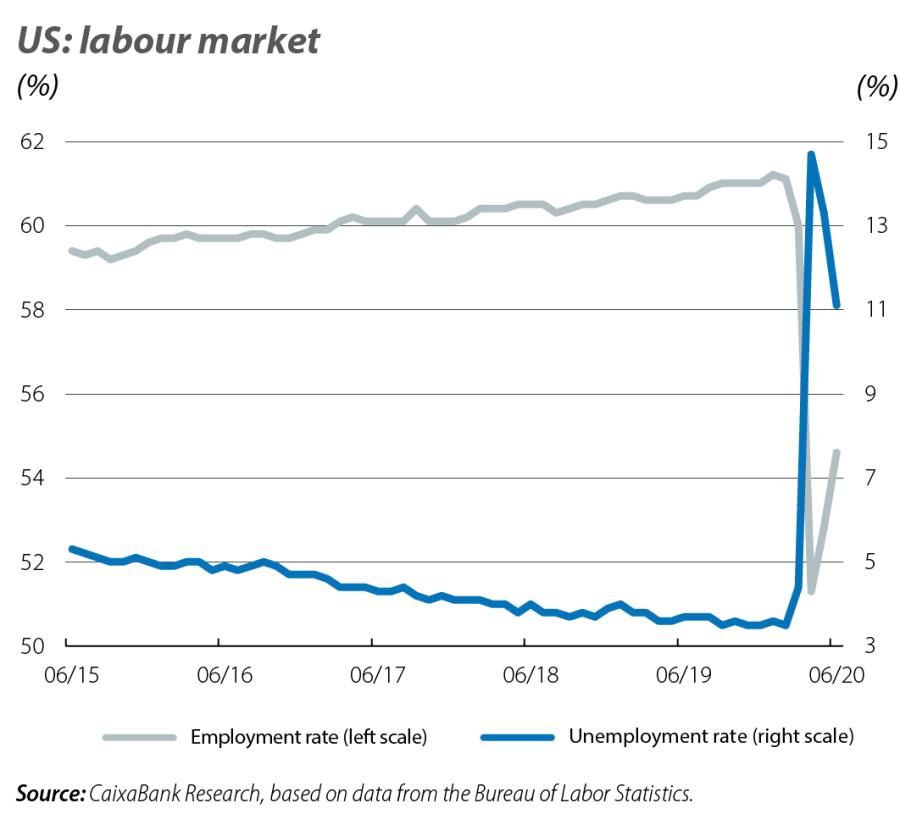
According to official estimates, GDP fell by 20.4% in April compared to March (–5.8% in March), the series’ largest drop since its inception in 1997. This estimate for the month of April indicates an unprecedented decline in economic activity in Q2. As for Brexit, it will continue to be a source of uncertainty for the remainder of the year: the British Government has decided not to request an extension to the transitional agreement which expires at the end of 2020 (the deadline was 1 July). Therefore, the British Government will be seeking a basic trade agreement before the end of the year, or a number of sectoral agreements with the EU. The negotiations will be fierce, given the existing chasm on issues like regulatory alignment on matters such as the setting of state aid or labour and environmental regulation, which the EU considers indispensable. As such, the possibility of a no-deal Brexit at the beginning of 2021 cannot be ruled out.
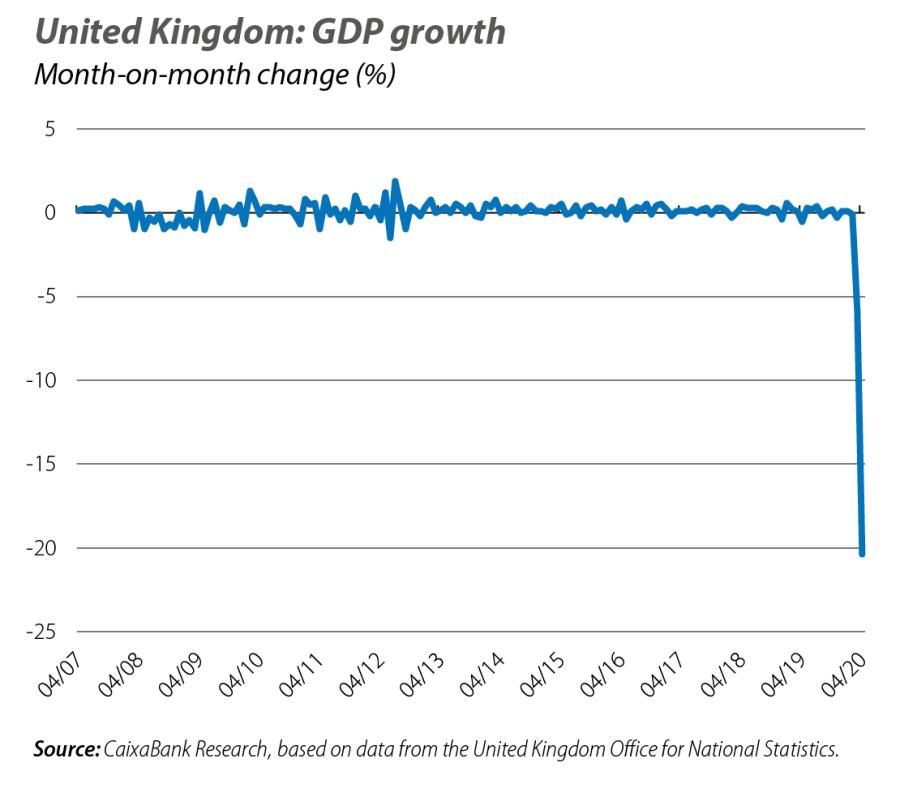
EMERGING ECONOMIES
In China, industrial production grew by 4.4% year-on-year in May (3.9% in April), while retail sales contracted by 2.8% year-on-year, clearly improving on the –7.5% registered in April. In addition, the services index which measures tertiary sector activity returned to positive territory for the first time since the pandemic began, with year-on-year growth of 1.0% in May (–4.5% in April). These indicators suggest that activity in China’s economy is normalising – in some sectors such as real estate, car sales and manufacturing, the rebound has been strong –, albeit gradually. Looking ahead to the next few months, we expect the economy to shift up a gear, propped up by the fiscal stimuli, provided that local outbreaks of the coronavirus like those that occurred in the second half of June in Beijing are contained. Finally, in the geopolitical sphere, the passing of a security law that gives China more power in Hong Kong could lead to increased instability on the island and heightened tensions with advanced economies.
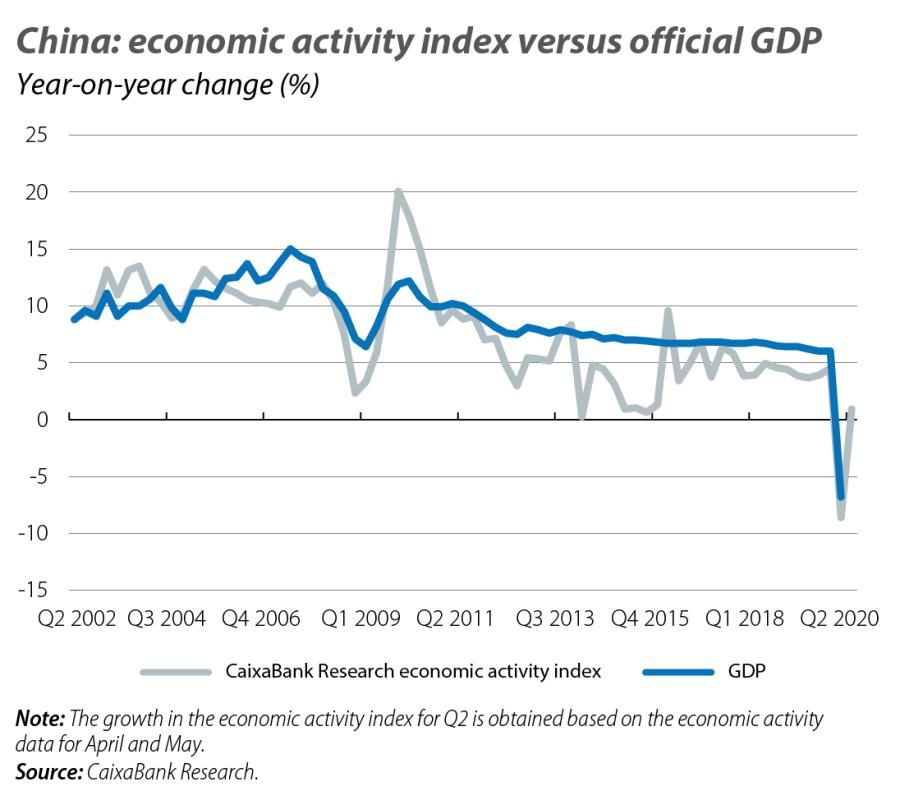
In the rest of the emerging economies, the outlook for Q2 is negative and the IMF has already warned of the impact of the pandemic on economic growth in Latin America, a continent heavily affected by COVID-19 due to the fragility of its healthcare institutions and poor public finances. In this scenario, according to the Fund, Brazil is expected to suffer its biggest recession in several decades in 2020, while Mexico is expected to endure a decline of 10.5% (similar to our forecast of –8.5%).